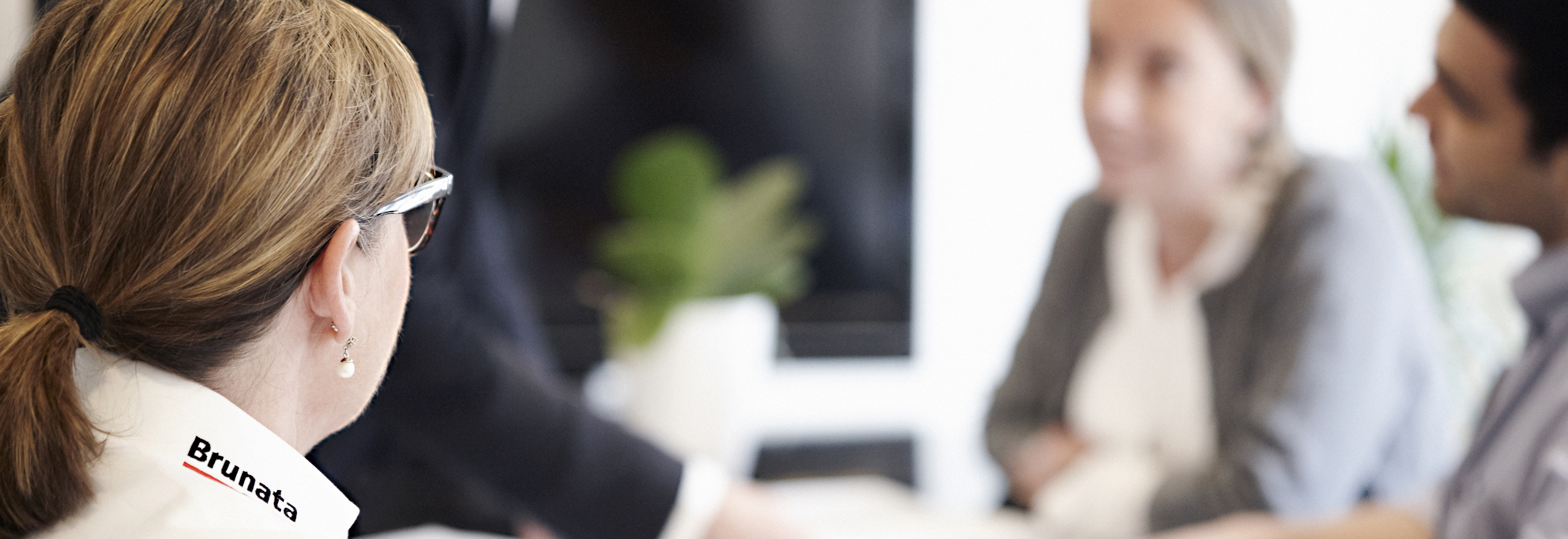
There is a huge energy loss in the district heating network
Brunata
The energy company Brunata can now identify over-consumption in individual radiators that return water with an excessive temperature.
Return temperature. Two small words with a huge potential. In Denmark, approximately 65 percent of all buildings are heated with district heating, but far too often, the water is too hot when it is returned to the combined heat and power plant. This means that the heat is not discharged where it should be, which is in our houses and apartments. This energy loss is partly caused by excessive flow in radiators. But new meters and digital tools can solve the problem, says Keld Forchhammer, CEO of Brunata.
“If we are to take better care of the environment, we should obviously try to eliminate energy waste. Here, return temperature in the district heating network is a significant culprit. A reduction of just one degree Celsius corresponds to the annual consumption of 10,000 homes or 9,500 tonnes of saved CO2. According to experts, the temperature in the district heating network could be reduced by up to 10 degrees if all radiators worked optimally.”
Until now, it has been difficult to target the problem of excessive return temperature due to the fact that the technology has only been present in recent years, says Keld Forchhammer:
“Using analogue meters, it is a completely unmanageable task to find the radiators in a building that have a disproportionate flow and therefore cause energy loss. The digital meters solve this challenge. Today, we can see directly how the individual radiator is used, and we can follow the entire chain between the radiator and the plant.”
Brunata has named the new solution ‘the digital janitor’. It has been developed in collaboration with students from the Technical University of Denmark and is based on algorithms developed at the Danish Technological Institute:
“From the start, we wanted to develop a solution that provides automatic notification when a radiator returns a temperature that is too high. At the same time, the system can also detect risers in a building that are colder than other risers over time – something which also indicates that there is an imbalance in the regulation. These are problems that were previously invisible, but can now be addressed,” says Keld Forchhammer.
The fact that the new solution has already generated great interest does not surprise Keld Forchhammer:
“The CHP plants are required by law to save energy so they have a clear incentive to get rid of the problem. At the same time, we also know that many properties are subject to a penalty charge because their return temperature is too high. Here, too, is an incentive to improve.”

On a larger scale, Keld Forchhammer is pleased with Brunata’s move from a reactive set of solutions to a proactive stance on the environment.
“Traditionally, we have just read a lot of meters once a year and then distributed the expenses among those who have to pay. In the future, we will see a completely different approach, taking an active position on how to reduce heat loss. It is a great feeling and certainly also the way forward. We must become better at turning knowledge into action.”
Being part of the SDG Accelerator for SMEs has inspired the company to make an extra effort, says Keld Forchhammer:
“In some countries, people are struggling just to put meters on the radiators. In that respect, we are far ahead in Denmark. However, at the heart of the Sustainable Development Goals is the desire to do better, and we want to do just that. There is still considerable room for improvement. We are not going to stop halfway.”
During the accelerator process, Brunata got the opportunity to work intensively with the new solution with inspiration and feedback from the associated advisors, says Keld Forchhammer.
“In any development programme, the fact that other people are engaged by what you do is really important. That kind of support has really boosted the entire project team. At the same time, we have also initiated a parallel idea process internally among our nearly 300 employees: Is there anything else we can do? Are there other business opportunities that point to the Sustainable Development Goals? That has given us great energy.”
Currently, Brunata is busy talking to potential customers, just as the entire business model must be well thought out:
"Of course we need to establish our business case, and we need to find out exactly what solutions we can offer. Should we contact individual residents, or do we just need to deliver data that allow others to take action? All of this has to be sorted out, but we have no doubt that there is great potential.”
In addition to Danish homes, the new solutions also have a clear European and perhaps even global perspective, Keld Forchhammer points out:
”As members of the Danish Board of District Heating, we definitely have an opportunity to make a mark on the agenda. Denmark is the leader in district heating. I know that we have a clear voice in the European community where the EU is also pushing for more energy efficiency. Even with small steps we can eventually move mountains.”
Read more about Brunata here.
SDG 7.3
Brunata aims to double the improvement in energy efficiency, for more affordable energy.
Issue found
An excessive return temperature in the heating network causes huge losses. A reduction of just one degree Celsius corresponds to the consumption of 9,500 tonnes of saved CO2.
Solution
Brunata has developed a solution that makes it possible to identify energy loss in individual radiators caused by an excessive flow.
Founded 1917
Brunata was established in 1917 and has approximately 280 employees in Denmark.
Family-owned
Brunata is family-owned with headquarters in Denmark, and have branched out onto a global market.
By 2030
Brunata aims to double the rate of improvement in energy efficiency.

 Locations
Locations